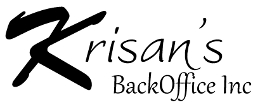
Asset Classes describe your broadest investment category and should be the highest level of classification you use to describe portfolio composition and performance on client reports. Think of assets as the neighborhoods of your investment city.
- Asset Classes should be important distinctions YOU use in managing your clients highest level risk-return profile. You should define ONLY the Asset Classes that comprise your investment philosophy.
- Just as neighborhoods have different profiles, typically each Asset Class behaves differently in some fundamental way from the other Asset Classes. Frequently, there is very low correlation between any two Asset Classes, so that your Asset Classes do not move in sync (e.g. stocks versus real estate).
- The most commonly used Asset Classes are: US Stocks, Foreign Stocks, Fixed Income and Hard Assets (such as real estate, energy & precious metals) and Cash/Equivalents.
- Each security can have only one Asset Class, one Sector and one Subsector. So if your Asset Classes are Stocks, and Bonds, you can NOT classify a fund as 60% Stocks; 40% Bonds. You would have to pick either Stocks or Bonds.
- To date PortfolioCenter has limited rebalancing tools. You’ll find more use for your Asset Classes in reporting and performance, than rebalancing.
- Performance reports are only available as the Asset Class level and the portfolio level.
- Targets (i.e. blended indices) can be based only on your Asset Classes.
Once established in PortfolioCenter, Asset Classes are tedious and time-consuming to change. While the limit on Asset Classes is very high, most reports print better if you have no more than 9 Asset Classes.
Need help?
